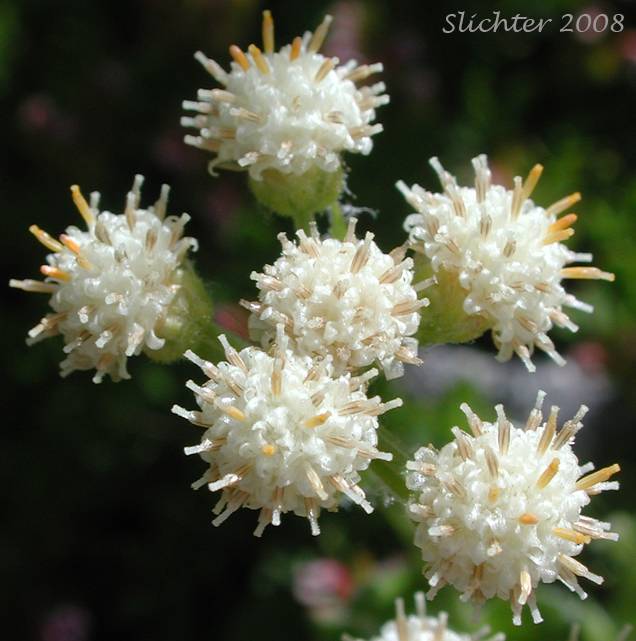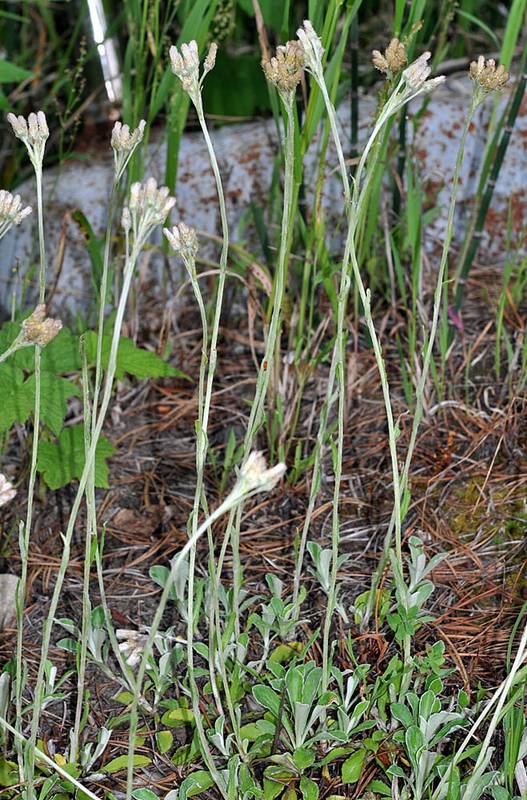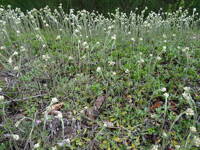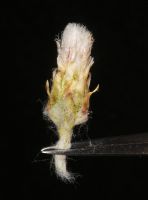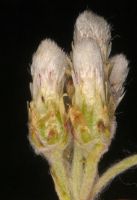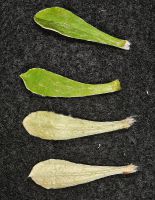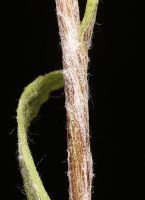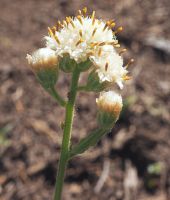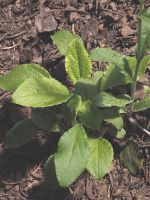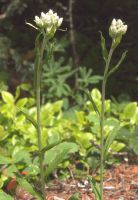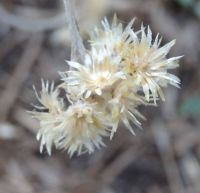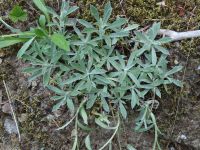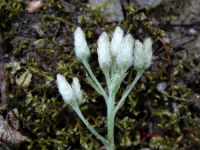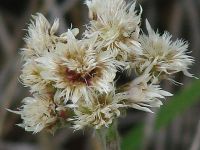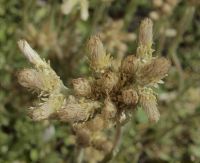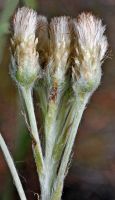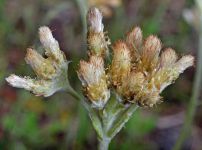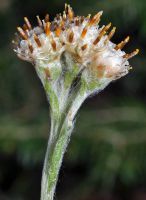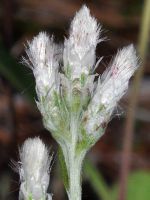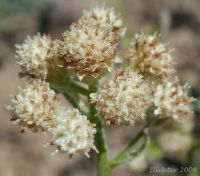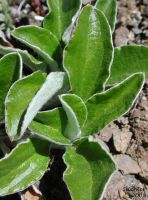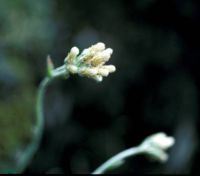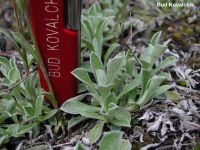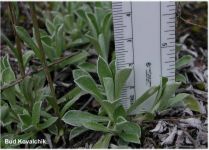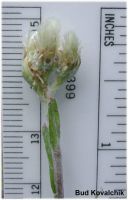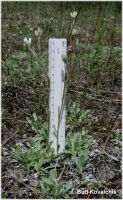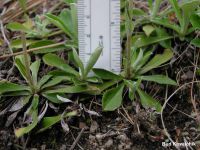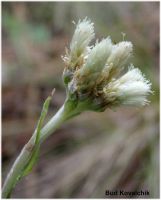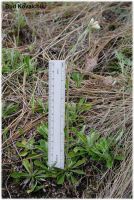Distribution: Occurring on both sides of the Cascades crest in Washington; Yukon Territory to California, east to the Rocky Mountains, northern Great Plains, Great Lakes region, and northeastern North America.
Habitat: Rocky or sandy slopes, dry to moist grasslands, and forest openings at low to middle elevations.
Flowers: May-July
Origin: Native
Growth Duration: Perennial
Conservation Status: Not of concern
Pollination: Apomixis, butterflies, flies, wasps
Perennial with usually leafy stolons and upright stems 1.5-4 dm. tall.
Basal leaves spatulate, oblanceolate or obovate, persistently white-woolly beneath and glabrous and green above, up to 2 cm. wide; cauline leaves few, linear and sessile.
Heads several in a crowded inflorescence; pistillate involucres 6-9 mm. high, the bracts narrow and long-pointed, the scarious portion dingy whitish; pappus surpassing the stigmas; staminate plants very rare in our range.
Achene terete.
The green upper surface of the leaves separates Antennaria howellii from all other species except A. racemosa. The latter usually has an open inflorescence, broader and larger leaves, and glands on the upper stem.
Publication: Pittonia. 3: 174. 1897.
-
ssp. howellii – Howell's pussytoes
 Occurring on both sides of the Cascades crest in Washington; Yukon Territory to California, east to the Rocky Mountains, northern Great Plains, and the Great Lakes region.
Occurring on both sides of the Cascades crest in Washington; Yukon Territory to California, east to the Rocky Mountains, northern Great Plains, and the Great Lakes region. -
ssp. neodioica – northern pussytoes
 Occurring on both sides of the Cascades crest in Washington; northern British Columbia to Oregon, east to the Rocky Mountains, northern Great Plains, Great Lakes region, and northeastern North America.
Occurring on both sides of the Cascades crest in Washington; northern British Columbia to Oregon, east to the Rocky Mountains, northern Great Plains, Great Lakes region, and northeastern North America.
PNW Herbaria: Specimen records of Antennaria howellii in the Consortium of Pacific Northwest Herbaria database.
WA Flora Checklist: Antennaria howellii checklist entry.
OregonFlora: Antennaria howellii information.
E-Flora BC: Antennaria howellii atlas page.
CalPhotos: Antennaria howellii photos.
USDA Plants: Antennaria howellii information.

